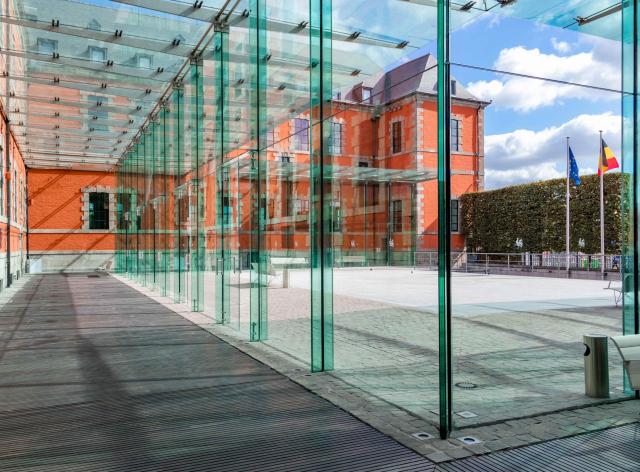From the Hospice Saint-Gilles to the Parliament of Wallonia
On the banks of the Meuse and at the foot of the Citadel lies a site steeped in history. From prehistoric times to the present day, the presence of Man has continued uninterrupted here.
The "Saint-Gilles" settlement was established on the Grognon site as early as the 12th century. At one time a hospital, at another a hospice, this building steeped in history and a symbol of hospitality now houses the Walloon Parliament.
A little history
Archeological excavations carried out on the site of the "Saint-Gilles" building have revealed foundations dating back to the 11th and 12th centuries. At that time, it was Namur's first hospital, caring for the sick, the poor and pilgrims. Its founders, religious or lay, lords or burghers, mobilized resources intended for the care of the poor to align themselves with the teaching of the Gospels: he who welcomes a destitute person receives Christ himself.
Over the centuries, the building bore several patronymics: "Grand Hôpital", "Hostellerie de Namur", "Hôpital Notre-Dame"... before being christened "Hôpital Saint-Gilles", a reminder of the eponymous chapel adjoining it in the 15th century.
The building evolved over the course of history. Surrounded by private mansions that their owners could no longer afford to maintain, it was built, rebuilt, enlarged and transformed to absorb these new spaces offered by their owners in exchange for a roof over their heads and a roof over their heads until the end of their lives.
The rebuilding was completed in 1723 to form a "U" shape. On the first floor was a large sick room and a dormitory occupied the entire first floor. The pantry, pharmacy, bakery and laundry were located in the basement. Brick for the walls and limestone for the base, window frames, quoins and string courses: the building is still representative of Mosan constructions of the period.
In 1796, the building changed its name and function. Intended as a home for the elderly and orphans, it was renamed "Hospice Saint-Gilles". It retained this function until 1965, when, unable to meet the sanitary standards required by the hospital function, it was abandoned.
Twenty years later, the Walloon Region became the owner of the building. To accommodate the Walloon Parliament in 1998, the Saint-Gilles was renovated and consolidated while respecting the existing structures. The former chapel became the building's entrance, the women's dormitory was transformed into a plenary session room, the former refectory became a committee room...
Although it has retained its original appearance, the missions of the Saint-Gilles have, for their part, changed a great deal!
Sources
https://artesgroup.be/fr/nouvelles/-2
https://connaitrelawallonie.wallonie.be/fr/lieux-de-memoire/le-saint-gilles#.ZEtyh3ZBw94
https://www.parlement-wallonie.be/media/doc/pdf/broch/cdp83.pdf
https://www.parlement-wallonie.be/media/doc/pdf/broch/saint-gilles-20-ans.pdf
https://www.parlement-wallonie.be/media/doc/pdf/jde_pw/parlement.pdf
